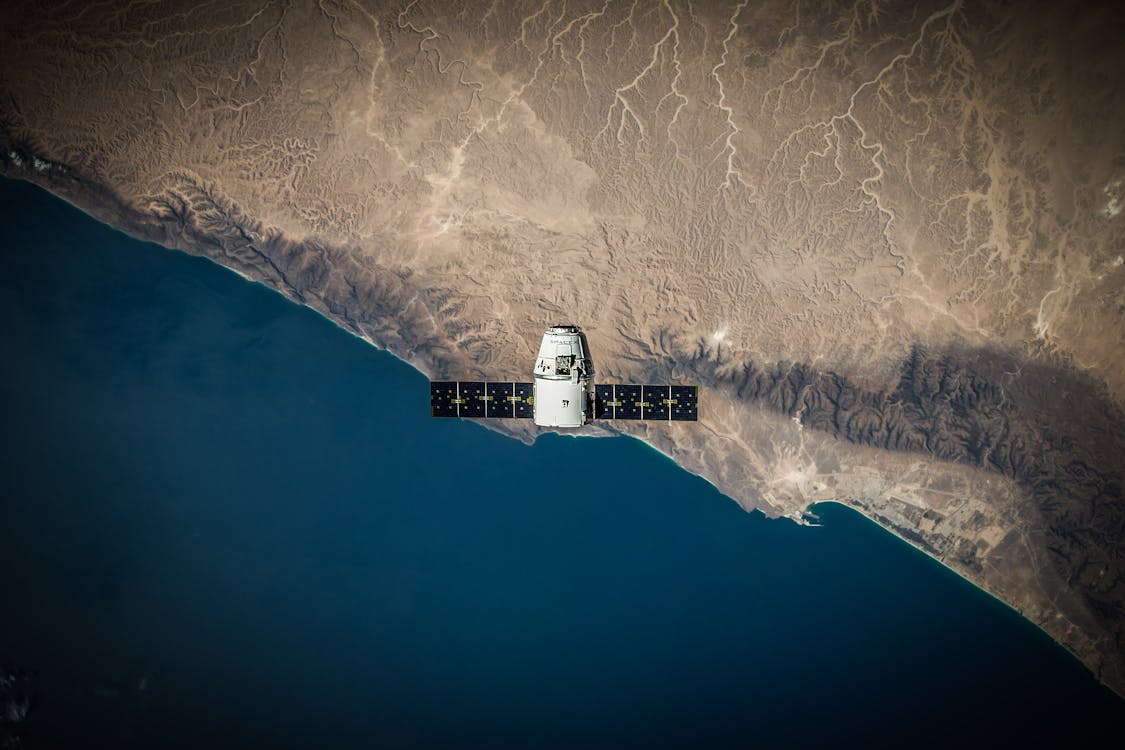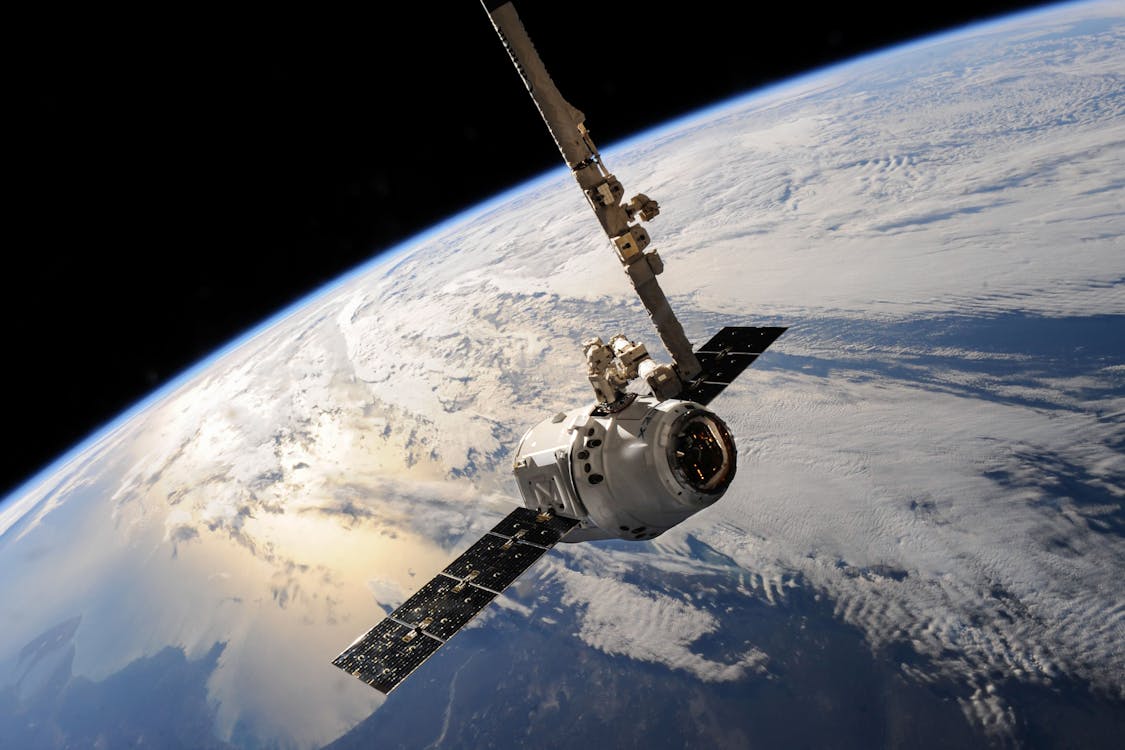In our daily lives, we often don’t think about the satellite systems that make many modern conveniences possible. Whether it’s helping planes navigate safely, allowing smart TVs to stream shows, or keeping our mobile phones connected, satellites play a critical role. Typically, we only notice their importance when something goes wrong, such as losing connection or experiencing disruptions in service.
In this article, we’ll explore the different types of satellite systems—from HAPS (High Altitude Platform Stations) to LEO (Low Earth Orbit), MEO (Medium Earth Orbit), and GEO (Geostationary Orbit) satellites—explaining their functions and distances from Earth. We’ll also look at how these systems are evolving and what exciting developments the future holds, particularly as 6G NTN comes into play.
As of now, there are about 4,550 satellites orbiting Earth. SpaceX is the largest owner, operating 1,655 satellites, which is more than a third of the total. This number is primarily driven by SpaceX’s ambition to provide global high-speed internet through Starlink. They plan to launch 42,000 satellites in the coming years to expand their coverage even further. Notably, SpaceX made headlines by launching 143 satellites in one go during a mission.
Who Owns the Most Satellites?
Here’s a quick look at the top owners of satellites:
- SpaceX: 1,655
- OneWeb Satellites: 288
- Planet Labs Inc.: 188
- Chinese Ministry of National Defense: 129
- Ministry of Defence of the Russian Federation: 125
- Spire Global Inc.: 121
- Swarm Technologies: 120
- U.S. Air Force: 87
- Iridium Communications Inc.: 75
- National Reconnaissance Office (NRO): 63
The United States has the most satellites overall, with 2,804 satellites in orbit, highlighting its significant investment in space technology.

The Role of 3GPP in Satellite Systems
The 3rd Generation Partnership Project, or 3GPP, is a key organization in the satellite industry. It develops technical standards for telecommunications technologies such as GSM, LTE, and 5G. Collaborating with the International Telecommunication Union (ITU), 3GPP sets global guidelines and ensures that future satellite and communication projects meet necessary requirements.
3GPP is also essential for the development of Non-Terrestrial Networks (NTN), working to ensure seamless integration between satellite systems and terrestrial networks, which will be vital as we transition to 6G.
Satellite Systems: HAPS, LEO, MEO, GEO, GSO, and HEO
Just as wireless signals use different frequencies for various purposes, different types of satellites serve distinct functions based on their altitude and design. This variety ensures that satellite networks can meet a wide range of needs.

-
HAPS (High Altitude Platform Stations): Positioned in the stratosphere, these stations operate at altitudes of 20-50 kilometers and act as communication relays to extend connectivity in remote or underserved areas.
-
LEO (Low Earth Orbit): These satellites orbit between 160 to 2,000 kilometers above Earth, offering low-latency communications for internet services and global tracking systems. Examples include networks like Starlink.
-
MEO (Medium Earth Orbit): Operating at altitudes of 2,000 to 35,000 kilometers, MEO satellites provide a balance between coverage and latency. Systems like GPS rely on MEO satellites to provide accurate global navigation services.
-
GEO (Geostationary Earth Orbit): GEO satellites orbit the Earth at 35,786 kilometers above the equator, maintaining a fixed position relative to the ground. They are ideal for broadcasting and long-distance communications, covering large areas with a single satellite.
-
GSO (Geosynchronous Orbit): These satellites orbit in sync with the Earth’s rotation but are not fixed over the equator, offering similar services to GEO satellites but with some variation in coverage.
-
HEO (Highly Elliptical Orbit): These satellites follow elliptical paths, providing communications to areas that are difficult to reach, like polar regions, and supporting scientific observations.
How Satellite Systems Work
Each satellite system functions differently depending on its orbit and purpose:
- HAPS provides localized connectivity, serving as a bridge between ground stations and end-users in areas where terrestrial networks are not available.
- LEO satellites enable fast data transmission with minimal delay, making them ideal for real-time communication and internet services.
- MEO satellites are suited for navigation systems like GPS, which require precise location data.
- GEO satellites offer stable, continuous coverage for broadcasting and global telecommunications, particularly for regions with low infrastructure.

Ongoing and Future Work in Satellite Systems
Non-Terrestrial Networks (NTN)
Non-Terrestrial Networks (NTN) encompass satellite-based and high-altitude platform systems that work alongside terrestrial mobile networks to extend coverage. There are two primary NTN architectures under development:
- Transparent Payload: Satellites with transparent payloads act as simple relays, transmitting signals from one point to another without modification.
- Regenerative Payload: These satellites process signals on board, improving efficiency and performance by reducing the load on ground stations.
In its work to develop NTNs, 3GPP is focusing on two key projects:
- WI: NR NTN: This initiative adapts 5G New Radio (NR) technology to NTNs, enabling seamless integration between satellite and terrestrial networks.
- WI: IoT NTN: This project aims to bring Internet of Things (IoT) connectivity to NTNs, allowing devices in remote or underserved areas to stay connected.

The Future: 6G and Non-Terrestrial Networks
The advent of 6G will bring about a dramatic transformation in satellite systems. 6G NTN technology is expected to offer ultra-fast, low-latency communication, and will play a critical role in connecting areas that are currently unreachable. NTNs will become an essential part of the 6G ecosystem, extending connectivity to every corner of the globe.
A pivotal moment in the development of 6G NTN occurred at the “Non-Terrestrial Networks, a Native Component of 6G” conference held in April 2024 in Sophia Antipolis, France. Co-organized by the European Space Agency (ESA), 6G-IA, and SNS-JU, the conference focused on the role of NTNs in 6G, emphasizing their potential to deliver global connectivity and bridge the digital divide.
As 6G technology develops, NTNs will allow us to connect devices and people across even the most remote regions of the planet. This will unlock new possibilities for industries such as smart cities, agriculture, logistics, and healthcare, making the world more interconnected than ever.
Sources: Ericsson, DEWESoft, Weibeld, The European Space Agency, u-blox Holding, 3GPP, 6G-NTN, ETSI, Magister Solutions
——————————————————————————————————-
Looking for Testing Services for Your Ground Stations? 🔍
At Verkotan, we offer expert satellite antenna testing tailored for ground stations. With our extensive experience, we deliver accurate and reliable results to meet all your wireless performance needs. 📡✨
👉Click here to get your quotation today! 📝
